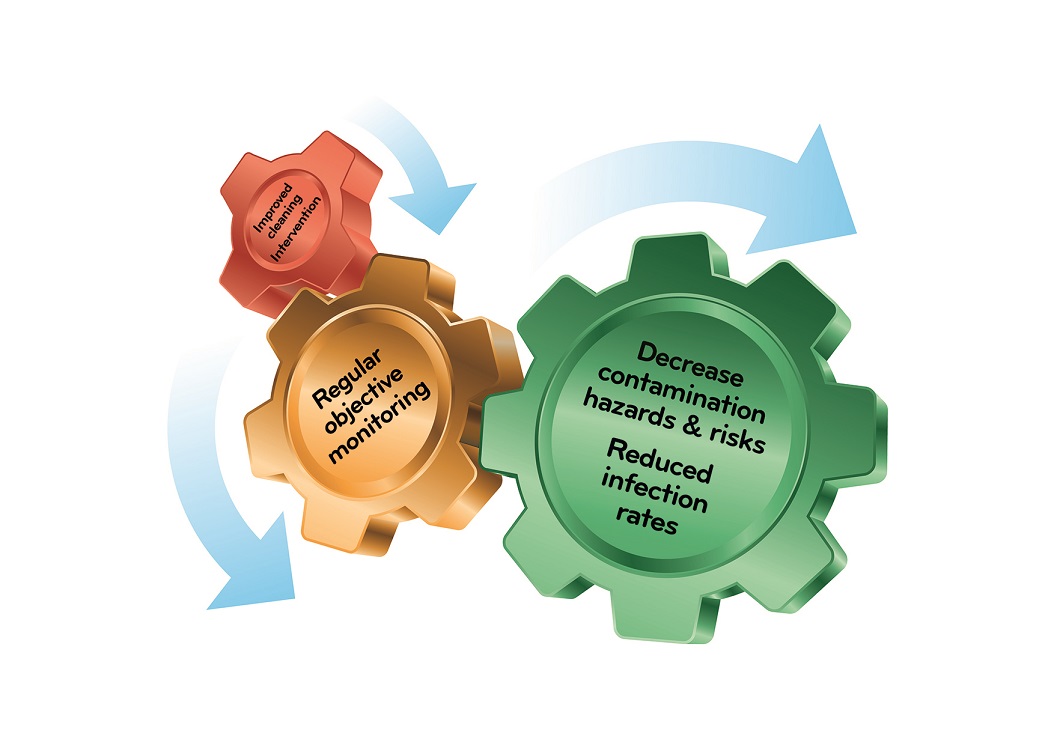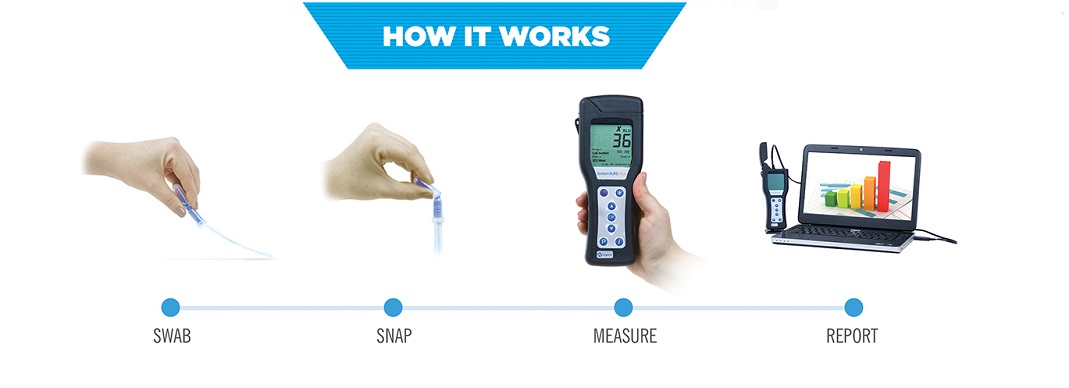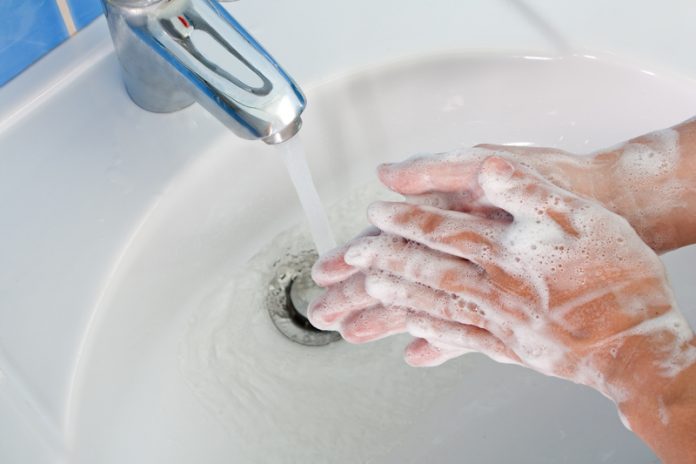Infection control relies on good hand hygiene practices. Martin Easter, General Manager, Hygiena International Ltd explains why it is so important
The importance of hand hygiene in the healthcare environment is a well-known fact. Each square cm of skin contains approximately 1500 bacteria. Proper hand hygiene disrupts the transfer of germs and microorganisms to and from patients, healthcare workers, and environmental surfaces. Hands are the vector for the transmission of contamination and that works both ways.
Hand hygiene reduces pathogen transmission
In the light of the proliferation of antibiotic multi-drug resistance, the World Health Organization (WHO) launched a global campaign in 2009 on hand hygiene and has subsequently shown that improving and implementing hand hygiene practices can reduce pathogen transmission in healthcare by 50%. In England the MRSA rate declined by 56% over a 4 year period as a result of a £120 million investment in cleaning and other improvement measures. Yet, the WHO reports the average rate of hand-hygiene compliance in healthcare personnel is still only 38.7%. Since 2011, financial restrictions and cuts to cleaning services are simultaneously associated with a 20% increase in infection rates, particularly MSSA and E. coli. Research also shows that MRSA infection rates are 50% higher in hospitals that outsource cleaning contracts, compared to those that keeping cleaning services in-house. However, implementing change requires engagement and an objective measurement system.

“Measurement is the first step that leads to control and eventually to improvement. If you can’t measure something, you can’t understand it. If you can’t understand it, you can’t control it. If you can’t control it, you can’t improve it.” (H James Harrington)
The introduction of simple modern technology have driven significant changes at the Mater Private hospital in Ireland. This stems from behavioural research that shows “individual experience is of greater importance than formal education in explaining hand hygiene behaviour”. Ann Higgins has shown that compliance rates increase significantly by capturing the imagination and engagement of staff. A baseline audit showed that compliance to hand hygiene procedures was approximately 20%. The introduction of a video training tool and a rapid ATP measurement system not only increase the compliance level but also provided quantifiable level of cleanliness. Over a 2 year period, the pass rate for a high level of cleanliness increased from 50% to 100% and the fail rate decreased from 50% to 0%, but also compliance to an even higher cleanliness level increased from 20% to 87%.
Cleaning of hands or surfaces is a matter of training, the use of the correct material and processes and resources and available time. Since cleaning is time and labour intensive (90% of cost), shortcuts can be taken and cleaning is often a soft target for cost savings. However, cleaning is a fundamental preventative measure in the fight against infection and superbugs. Subjective visual assessment methods have been used historically to measure cleanliness but they are not fit for purpose and only detect gross lapses of practice. Visual assessment gives a “misleading over-estimate of cleaning that undermines infection control strategies” (Jones 2009). Using an objective quantitative method of cleaning verification such as the ATP system enables standards to be set and measured and engages with staff to effect behaviour change. This simple rapid and cost effective method has many uses in healthcare and can be used anywhere that hygiene matters, to save time, money and lives.
Failure costs are high
Cleaning cost the NHS £725m per annum but research shows that only 40% of hospital cleaning policies are delivered in practice, resulting in potential wastage of more than £400m. The NHS Productivity review 2016 showed that a small improvement in cleaning practices alone would save £93m.
The cost of failure is high. A single infection is estimated to cost £5000 – £10,000. The National Patient Safety Association states that there are more than 200,000 slip injuries per annum that result in 26 deaths. It estimates that the average trust spends £92,000 per annum on slip related injuries.
“Hand Hygiene is arguably our most important life skill. So Teach it well and Teach it often.” Michael J Blackburn, CEO
The ATP test is simple and easy to use giving a numerical result in 15 seconds. ATP bioluminescence is a simple rapid method for measuring organic soil. It requires a small hand held instrument and an all-in-one sample collection and testing device, and generates giving a numerical result in 15 seconds. The use of ATP bioluminescence for cleaning verification is well established and has also been the highest recommendation by the Rapid Review Panel of the Department of Health and Public Health England in support of the fight against HCAI. The test is also recognised by the CDC in USA and is written into a standard for cleaning in Denmark and Sweden.
 Monitoring compliance
Monitoring compliance
Many users and applications testify to the benefit and value of an instant objective test for cleaning verification from infection control training and compliance of hand hygiene, housekeeping and environmental monitoring to sterile service and catering. “ATP gives you a clean hospital,” said Val Hulme (Team leader Domestic Services). “When you’re doing a deep clean the staff know they are going to be tested but they do everything to a very high standard now. ATP has helped us to achieve that. “When you have a number – like the ATP machine gives you – it’s more objective than subjective. You can’t argue with it. ATP makes the staff competitive. They all want to score five or below. And ideally zero.”
Regular objective monitoring of cleaning increases compliance of cleaning policies from 40% to 82%. This decreases contamination levels, reduces infection rates, maximises the use and value of existing resources thus saving time, money and lives.
Martin Easter
General Manager/Chief Scientific Officer
Hygiena International Ltd
contactus@hygiena.com
Please note: this is a commercial profile











